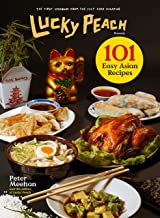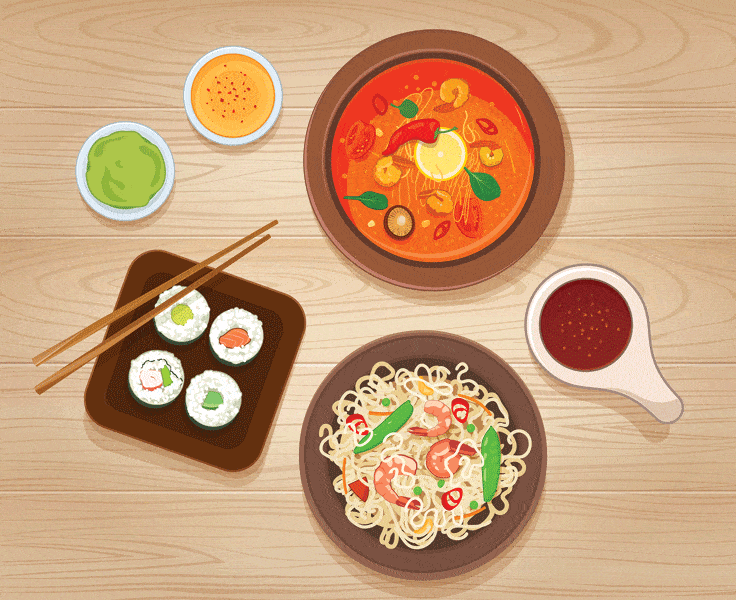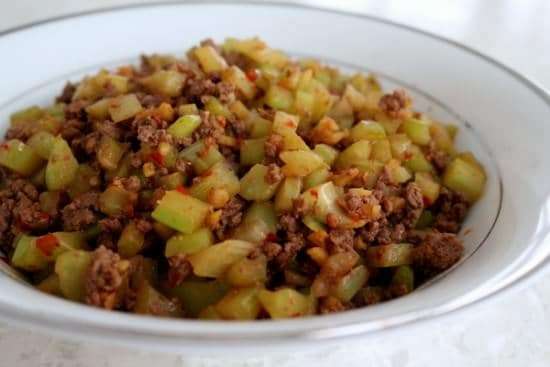Lucky Peach: 101 Easy Asian Recipes by Peter Meehan
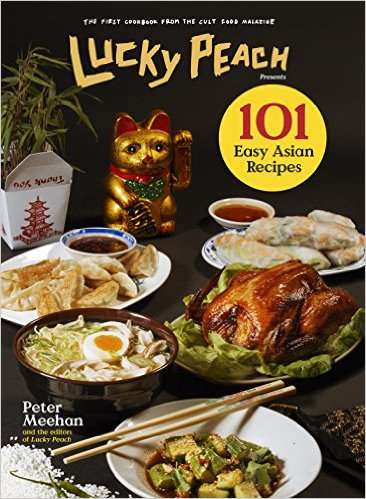 It’s early December and I feel like I’m trapped in some sort of holiday sandwich between last week’s Thanksgiving turkey and next week’s Chanukah latkes. What I really crave are bold flavors and healthy ingredients that are a departure from all the exquisite excess of the season (and won’t require a grim commitment to get to the gym). This is why when Lucky Peach: 101 Easy Asian Recipes by Peter Meehan and the editors of Lucky Peach (Clarkson Potter; October 27, 2015) came into our offices I leapt on it like a crazed badger.
It’s early December and I feel like I’m trapped in some sort of holiday sandwich between last week’s Thanksgiving turkey and next week’s Chanukah latkes. What I really crave are bold flavors and healthy ingredients that are a departure from all the exquisite excess of the season (and won’t require a grim commitment to get to the gym). This is why when Lucky Peach: 101 Easy Asian Recipes by Peter Meehan and the editors of Lucky Peach (Clarkson Potter; October 27, 2015) came into our offices I leapt on it like a crazed badger.
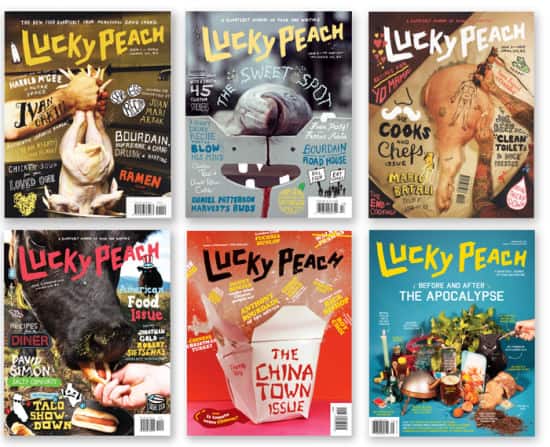 Lucky Peach is a foodie magazine with a quirky sense of humor, an appreciation for tradition (but not afraid to toss tradition out the window), and mouth-tingling recipes that borrow from everyone’s family tradition. For example, their pasta and noodles section alone includes Korean Jap Chae yam noodles, Jewish Rosh Hashanah Kugel (a noodle pudding), and such fusion marriages as Pesto Ramen, Fettuccine with Butternut Squash and Red Poblano Crema, and Rotisserie Chicken Ramen. (There’s a deep affection for ramen at Lucky Peach.)
Lucky Peach is a foodie magazine with a quirky sense of humor, an appreciation for tradition (but not afraid to toss tradition out the window), and mouth-tingling recipes that borrow from everyone’s family tradition. For example, their pasta and noodles section alone includes Korean Jap Chae yam noodles, Jewish Rosh Hashanah Kugel (a noodle pudding), and such fusion marriages as Pesto Ramen, Fettuccine with Butternut Squash and Red Poblano Crema, and Rotisserie Chicken Ramen. (There’s a deep affection for ramen at Lucky Peach.)
The cookbook however confines itself to pan-Asian recipes. The “101” in the title also refers to the difficulty level—the project was born out of the idea to keep everything super simple and appealing for the home cook. Meehan admits that after years of insanely complicated recipes, “I’d had two kids in the interim and reconnected with the beauty, and more essentially, the necessity of good and easy ways to get dinner on the table.”
As your Asian food guru, he provides a pictorial of basic, intermediate and champion Asian ingredients and describes their flavors and uses. Most of the basic ingredients are easily found in a good supermarket, the rest can be purchased at Asian groceries or online. You might be surprised what’s at your grocery store. I found gochujang, a spicy Korean bean paste, in the natural food section of Stop & Shop.
The book doesn’t cover all of Asia’s many cuisines; it’s more of what Meehan calls “our cavalier and labradoodle-enthusiastic approach to what we mean when we talk about Asia.” Instead, he wants you embrace “the restorative beauty to the purpose and order of cutting things up and turning them into sustenance.” He wants you have fun, try new dishes and most importantly, have something delicious to eat.
Here’s a recipe that you can make on the weekend to have on hand for a speedy weeknight dinner, although frankly, it’s as easy as making pasta with meat sauce—because that’s exactly what it is. It’s the perfect antidote during to the season.
Sichuanese Chopped Celery with Beef
Makes 2 main-course servings with noodles or 4 servings as part of a multi-dish meal with rice.
Kosher salt
2 cups diced (1/2-inch) celery
1 tablespoon neutral oil
4 ounces ground beef
1 ½ tablespoons daoubanjiang or gochujang (spicy chili-bean paste)
1 ½ tablespoons finely chopped ginger
1 teaspoon soy sauce
1 teaspoon Chinkiang vinegar
Cooked fresh wheat noodles (lo mein or ramen), rice noodles, spaghetti or rice if that’s what you feel like having
Bring a few cups of salted water to a boil in a saucepan. Blanch the celery for 30 seconds, then drain and rinse in a colander under cold water.
Heat a wok or cast iron skillet over high heat and coat with the oil. When the oil is shimmering , add the ground beef and stir-fry until cooked through, using a spoon to break the meat into small pieces. Add the chili-bean paste and continue to stir until the fat in the pan has taken on the color the chili paste. Add the ginger and stir-fry until fragrant, just a few seconds more, then add the celery.
Continue to stir-fry until the celery is hot and coated with sauce. Finish with the soy sauce and vinegar. At this point the sauce may be refrigerated or frozen. Reheat before proceeding. Serve over noodles or rice.
Recipe from Lucky Peach: 101 Easy Asian Recipes by Peter Meehan.
